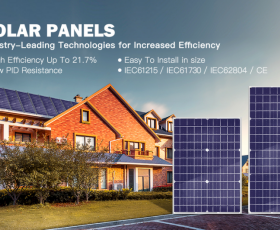Can Solar + Storage Achieve Full Off-Grid Independence?
In recent years, the push for sustainable living has never been more evident. With the increasing adoption of renewable energy sources like solar power, people are exploring innovative ways to harness these resources for complete independence from the traditional energy grid. One promising approach is the combination of solar energy storage systems. Let’s dive into how this could enable full off-grid independence.
The Basics of Solar and Energy Storage
Solar energy, powered by photovoltaic cells, converts sunlight directly into electricity. While solar panels are abundant and relatively inexpensive, they do not operate 24/7. The output of solar panels depends on sunlight availability, which is inconsistent and unpredictable. This is where energy storage systems come into play.
Energy storage systems, commonly referred to as batteries, act as a temporary reservoir for electricity. They can store excess energy generated by solar panels during the day and release it at night or during periods of high demand. Modern storage technologies, such as lithium-ion batteries, provide high energy density, fast charging, and cycle durability, making them ideal for practical use.
The Concept of Off-Grid Independence
Full off-grid independence refers to the ability to generate and store all the necessary energy required for a household without relying on the traditional energy grid. This means having a self-sufficient power supply that can meet all daily needs, including lighting, heating, cooling, appliances, and backup power during grid outages.
Achieving this independence is no small feat. It requires not only a reliable solar system but also a robust energy storage solution that can handle varying energy demands throughout the day. The integration of these two technologies is key to ensuring consistent and uninterrupted energy supply.
The Synergy Between Solar and Storage
The synergy between solar energy and storage systems lies in their complementary strengths. Solar panels generate energy when sunlight hits them, and storage systems ensure that this energy is available when needed. Together, they create a predictable and reliable energy supply that can match the fluctuating demands of a household.
For example, imagine a house with solar panels producing energy during the day. The excess energy is stored in a battery. As the sun sets, the stored energy powers the house’s essential appliances and lights. During periods of heavy usage, such as holidays or extreme weather, the stored energy ensures continuity of service.
Challenges and Considerations
Despite these benefits, there are challenges to consider. The cost of high-quality batteries is a significant barrier. Additionally, the efficiency of these systems can vary, with factors like temperature, cycling, and depth of discharge impacting performance. Research is ongoing to improve battery technology and reduce costs, making these solutions more accessible.
Regulation and policy also play a role. In some regions, there may be incentives for installing solar plus storage systems to encourage green energy adoption. Understanding local policies and incentives can help make these technologies more feasible for home and business use.
The Future of Off-, Grid Independence
The future of off-grid independence looks promising. Advances in solar technology and battery storage systems are making it easier to integrate these solutions into residential and commercial systems. As these technologies mature, they could become a cornerstone of sustainable energy strategies worldwide.
In conclusion, the combination of solar energy and storage systems offers a viable path toward full off-grid independence. While challenges remain, the potential benefits—such as energy security, reduced dependence on the grid, and environmental benefits—are significant. As technology evolves, these solutions are likely to become more widespread, paving the way for a cleaner, more sustainable energy future.

